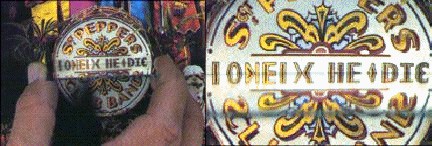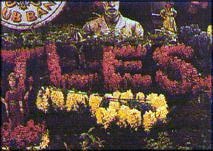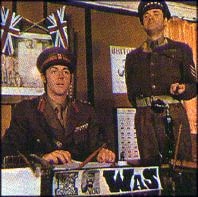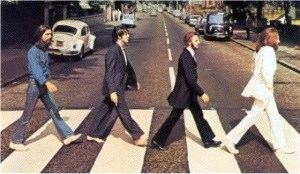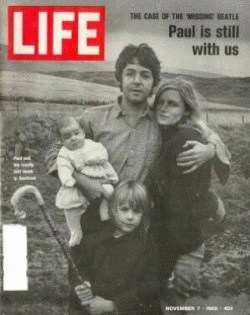Tag: Beatles
Don’t sell your LPs
By Scott Westerman – Curator – Keener13.com
 My first 45: Limbo Rock by Chubby Checker. My first LP: Shut Down Vol II by the Beach Boys. LPs who’s grooves I wore out with repeated play: Crosby, Stills & Nash, Blood, Sweat & Tears and Earth, Wind & Fire. The number of LPs and 45s in my library now: 672
My first 45: Limbo Rock by Chubby Checker. My first LP: Shut Down Vol II by the Beach Boys. LPs who’s grooves I wore out with repeated play: Crosby, Stills & Nash, Blood, Sweat & Tears and Earth, Wind & Fire. The number of LPs and 45s in my library now: 672
Remember the sound of putting a needle to vinyl and waiting for the first track to vibrate out of the grooves, through the cartridge and the pre-amp, across the amplifier’s power transistors (after adding appropriate bass and pressing the ‘loudness’ button) and along the two pairs of copper wires towards those expensive speakers that were the heartbeat of that stereo system that cost almost as much as your first automobile?
In the day, exploring an album often meant discovering a deep track, about three cuts in, that would never be selected as a single, but touched something at your emotional core (Quatermass – Good Lord Knows is one of my faves). If the LP was Abbey Road or Dark Side of the Moon, it meant 45 minutes of bliss, interrupted only by the amount of time it took to flip the disk to side two. If it was The Firesign Theater’s “Don’t Crush That Dwarf, Hand Me the Pilers”, it was something you replayed until the Adventures of Porgie and Mudhead were burned, line by line, into your long term memory.
Vinyl was an experience you shared. Listening to the Bridge Over Troubled Water LP while exploring the heights of passion with a half dozen other junior high couples in the dark corners of a friend’s basement. Wondering what the heck the obscure band was that the guys at Discount Records always liked to play while you and your testosterone charged buddies were trying to sneak a peak at banned Jimi Hendrix “Electric Lady Land” album cover. Or running Funkadelic’s “I Got A Thing” over and over so your band could learn the nuances of a bass line, a wah wah peddle, and some drum licks in a hopeless attempt at imitation.
 Vinyl, when mixed with the 12AX7A vacuum tubes that powered your stereo created a warmth that added an indescribable something that the best digital Pro Tools plug-in could never recreate. The LP’s cover became a work of art in itself. Sgt. Pepper’s cover launched a hundred analytical dissertations, fed the Beatle rumor mill and became fodder for trivia buffs who memorized the names and faces of every image thereon.
Vinyl, when mixed with the 12AX7A vacuum tubes that powered your stereo created a warmth that added an indescribable something that the best digital Pro Tools plug-in could never recreate. The LP’s cover became a work of art in itself. Sgt. Pepper’s cover launched a hundred analytical dissertations, fed the Beatle rumor mill and became fodder for trivia buffs who memorized the names and faces of every image thereon.
Vinyl, in the hands of the right disc jockey became an instrument that could create a symphony where disparate artists came together in a seamless harmonic whole to take you on an emotional roller coaster ride.
Then came one turn of the evolutionary road, where it was thought that Vinyl was as anachronistic as a pterodactyl, technically deficient and ultimately too fragile to be a permanent part of the audio archive. CDs and their successor, the MP3 were pure digital storage devices that could be identically cloned without the generational losses inherent in the magnetically arranged iron filings on strips of Mylar or the vibratory bands encircling black plastic.
For three decades we’ve believed that digital perfection was the be all and end all. But now, it seems that everything old is new again. Even as CD sales continue to decline, vinyl is in a renaissance.
The Chicago Tribune quotes Ken Shipley, co-owner of the Numero Group, a Chicago label that specializes in reissues of underground soul music. “We’re seeing the (vinyl) resurgence in all walks of life: from 50-year-old guys who want high-quality product to match their high-end stereos to 19-year-old kids who are sick of the minimalist Ikea design that has plagued dorm rooms for the last decade..Vinyl is the new books.”
Pressing plants are being brought out of mothballs and limited edition vinyl box sets are selling out, at price points that would make CD manufacturers salivate. Bill Gagnon, senior vice president of catalog marketing at EMI Music told the Trib that he expects vinyl to eventually make up about 4% of EMI’s revenue. As with everything else, its the younger generation that is driving the demand.
Will the LP supplant digital? Nope. The pure ease of carrying your entire record library around in a cigarette box that renders it perfectly and pristine first time, every time ensures a digital future.
But like the Keener generation, new audiences are discovering the same magic we remember from that first time we put needle to groove.
WKNR and the “death” of Paul McCartney
On October 12, 1969, Keener killed Paul McCartney.
 Russ Gibb, working on WKNR-FM, heard from an Eastern Michigan University student about a series of clues that seemed to point to Paul McCartney’s death. The story took on a life of its own, both on Keener and WKNR-FM and Russ received credit for making the story of McCartney’s supposed demise a national story.
Russ Gibb, working on WKNR-FM, heard from an Eastern Michigan University student about a series of clues that seemed to point to Paul McCartney’s death. The story took on a life of its own, both on Keener and WKNR-FM and Russ received credit for making the story of McCartney’s supposed demise a national story.
It was a Sunday afternoon in Detroit when Uncle Russ took the call. He had just played some tracks from the Abby Road album and turned to the phone lines for his customary “rap” with his listeners. Eastern Michigan University student Tom Zarski was on the line. “I was going to rap with you about McCartney being dead and what is this all about?”
Gibb told us that his mind immediately went back to the Dylan is Dead rumor that circulated after the poet’s serious motorcycle crash in 1967. He began to review the litany of rumors floating around about the current crop of rock celebrities. Tom was insistent, claiming that there were clues on the Beatle’s records. “..play Revolution Number Nine backwards,” he said.
WKNR-FM’s audience heard “Turn me on, dead man” for the first time. ![]() Russ Gibb with UM Student John Miller
Russ Gibb with UM Student John Miller
The origin of the rumor is a bit more complicated. It may have had its genesis in a 1966 auto accident where Paul suffered minor injuries. Rolling Stone magazine heard the story as early as 1968 and by 1969 clues were circulating around college campuses. In the days leading up to the WKNR revelations, there were several published accounts. Tim Harper wrote an article on the subject on September 17th in the Drake University student newspaper. A similar article appeared in the University of Illinois campus daily six days later. University of Michigan undergrad Fred LaBour heard Russ Gibb’s October 12 broadcast. His article, published in the October 14 edition of the Michigan Daily as a record review parody, is often cited as providing the key exposure that helped propel the story beyond the local market. He admitted to Uncle Russ that much of his article was pure fabrication. ![]() Russ Gibb interviews Fred LaBour
Russ Gibb interviews Fred LaBour
I had just signed up at our all-volunteer campus station, WCBN AM 650 (at the University of Michigan) about that time and unbeknownst to our campus station manager, I called Apple Records live on the air. The fun in it was all the switching around, talking to operators, etc. (The station got the bill for the long distance call later and I caught hell for it, but it was worth it.)Anyway, one overseas operator stayed on the phone with me for the whole ordeal. We finally got through to the press office at Apple Records and I asked this woman is Paul was indeed, dead. She said in her lovely accent that, no he was quite alive and had been in the office that very afternoon.After this press lady hung up, I said to my associate, Al Hendry, “Well, I guess he’s still alive.”I didn’t know it but the overseas operator was still on the phone, live on the air and she said “I could have told you that!” There was exactly two seconds of silence, then everyone in the studio started laughing.Ken R. DeutschAuthor – The Jingle Book
Ann Arbor DJ Larry Monroe first heard the rumor from his younger brother and was talking about it on air with WOIA listeners as early as October 9th. Fellow WOIA jock Jim Curtis, the Ann Arbor air name of New York radio legend Jim Kerr — who was “Robin Stone” on Keener in 1971, called Apple in London for reaction. With the time difference, Jim got the night watchman who characterized the tale as, “.. a load of horseshit.”
By November 2nd, J. Marks had written an article for the New York Times disputing the allegations. He remembered finishing a project with Linda Eastman two years earlier. The future Mrs. McCartney expressed interest in meeting Paul but told Marks that she heard that he had died and had been replaced by a double. When the couple were married in March of 1969, Marks sent a note saying “Congratulations, whoever you are.”
RKO invited Paul Cannon, Russ Gibb and Fred LeBour to Hollywood to participate in a television show hosted by attorney F. Lee Bailey. The mock courtroom was the setting for a discussion of evidence surrounding the rumor. The program was broadcast in several RKO markets, including New York. All copies of the tape then mysteriously disappeared, adding an additional twist to the proceedings.
The Paul is Dead story peaked in America with the November 7 edition of Life magazine. The Life crew found the Beatle at his farm in Scotland and after some initial reticence, McCartney gave a detailed interview, debunking the myth that continues to interest Beatle fans to this day.
There are several versions of the Paul is Dead story. Here are a couple of the most popular iterations.
In one account, Paul was was decapitated in an automobile accident occurring in November of 1966 after an argument with the other Beatles at Abby Road studios (“He blew his mind out in a car” – A Day in the Life – Sgt. Pepper). Another version depicted a despondent Paul picking up a female hitchhiker who accidentally caused the wreck when she tried to get too close to the driving Beatle. The woman’s name was said to be Rita (“I took her home. I nearly made it.” – Lovely Rita, Meter Maid – Sgt. Pepper).
There’s an interesting postscript to the story. Chris Morton, who was in studio with Russ Gibb when during his fateful WKNR-FM broadcast visited London in the summer of 2001. He wrote to keener13.com to say, “We went on the walking Magical Mystery Tour in St. John’s Woods, ending up in front of Abbey Road Studios. I was delighted when the tour guide told a brief history of the affair, attributing its genesis to Detroit disk jockey Russ Gibb.”
Whatever its true origin, WKNR played a pivotal role in amplifying one of the more intriguing and macabre chapters of the history of the Beatles.
Other Paul is Dead Resources:
The Paul McCartney Death Rumor by Larry Monroe – The former Ann Arbor DJ’s Memory of the event
Turn Me On, Dead Man – by Andru J. Reeve, published by Popular Culture, Ink., 1994
The Real 5th Beatle Passes
 Murray the K often got the moniker, but it was a former accountant turned road manager that truely became?”the 5th Beatle”. Niel Aspinall, who died on March 23rd, pre-dated Ringo in his relationship with the band became one of the Beatles’ most powerful behind the scenes forces. He is credited with collating?the celebrity pictures for the cover of the Sgt. Pepper album and even took a turn behind the microphone, helping sing the?chorus of “Yellow Submarine”. His biggest achievement: Pulling together the often fractious surviving Beatles for the production of the multi-media “Beatles Anthology.” He was 66.
Murray the K often got the moniker, but it was a former accountant turned road manager that truely became?”the 5th Beatle”. Niel Aspinall, who died on March 23rd, pre-dated Ringo in his relationship with the band became one of the Beatles’ most powerful behind the scenes forces. He is credited with collating?the celebrity pictures for the cover of the Sgt. Pepper album and even took a turn behind the microphone, helping sing the?chorus of “Yellow Submarine”. His biggest achievement: Pulling together the often fractious surviving Beatles for the production of the multi-media “Beatles Anthology.” He was 66.
Beatle Bootleg Stirs Lawsuit
A 1962 recording, purported to be the first of the fab four with Ringo at the drums, has the Beatles at odds with a Miami record company.
Remembering Hurricane Smith
 He was a one hit wonder as a singer in 1973, but Norm “Hurricane” Smith had a subtle but powerful influence on the Keener sound as the guy who turned the dials for 180 Beatle recordings. As an engineer at EMI, he worked closely with George Martin to create the unique sound that launched Liverpool Lads on the international stage. After completing Rubber Soul in 1965, Smith was promoted to producer and crafted three Pink Floyd albums, “The Piper at the Gates of Dawn”, “A Saucerful of Secrets”, and “Ummagumma”. 8 years later, he sang a demo of a self-penned song called “Oh Babe, What Would You Say“
He was a one hit wonder as a singer in 1973, but Norm “Hurricane” Smith had a subtle but powerful influence on the Keener sound as the guy who turned the dials for 180 Beatle recordings. As an engineer at EMI, he worked closely with George Martin to create the unique sound that launched Liverpool Lads on the international stage. After completing Rubber Soul in 1965, Smith was promoted to producer and crafted three Pink Floyd albums, “The Piper at the Gates of Dawn”, “A Saucerful of Secrets”, and “Ummagumma”. 8 years later, he sang a demo of a self-penned song called “Oh Babe, What Would You Say“ hoping to convince another artist to record it. As the story goes, fellow producer Mickie Most convinced Smith to release the track himself. 1973 was a year when unique voices like Dr. John, David Bowie and Al Green were first resonating with the public and Smith’s scratchy tenor sold well enough to make it to number 58 on Billboards year end hot 100. His yet-to-be released autobiography is titled “John Lennon Called Me Normal”?and a 2004 retrospective CD featured liner notes from Paul McCartney and members of Pink Floyd. Smith passed away on March 3rd at the age of 85.
hoping to convince another artist to record it. As the story goes, fellow producer Mickie Most convinced Smith to release the track himself. 1973 was a year when unique voices like Dr. John, David Bowie and Al Green were first resonating with the public and Smith’s scratchy tenor sold well enough to make it to number 58 on Billboards year end hot 100. His yet-to-be released autobiography is titled “John Lennon Called Me Normal”?and a 2004 retrospective CD featured liner notes from Paul McCartney and members of Pink Floyd. Smith passed away on March 3rd at the age of 85.
Its about The Brand
 Beyond the haircuts, one of the distinctive visuals associated with the Beatles is the logo that adorned Ringo’s Ludwig drum kit. Brian Epstein was an early believer in the holistic approach to rock n roll branding. The hair, the suits, the boots, the guitars, the drums and the logo all contributed to the total Beatle experience. As a recent Freep slide show details a band’s logo is often instantly recognizable. Throughout the Keener era, you looked for The Brand when you flipped through albums at Harmony House, when you perused the newspaper concert pages and when you made those t-shirt purchases at the live shows. Dean Torrence, famously half of Jan & Dean, made a living in the imaging space crafting logos for the Turtles, Nillson and The Beach Boys. And today, The Brand is becoming more important that the records that were once its foundation. Radiohead and Prince have virtually given away their music in support of concert dates and merchandising. And Madonna recently abandoned Warner for Live Nation, the world’s largest concert promoter, who will try to maximize cash flows through multiple revenue streams, the records are almost secondary.. Frank Maruca had an innate understanding of The Brand in the run-up to Keener’s Halloween night launch 44 years ago, printing matchbooks, bumper stickers?and high school book covers and plastering the station’s distinctive blue logo wherever he could. Even now, seeing it in its various incarnations instantly brings back memories.
Beyond the haircuts, one of the distinctive visuals associated with the Beatles is the logo that adorned Ringo’s Ludwig drum kit. Brian Epstein was an early believer in the holistic approach to rock n roll branding. The hair, the suits, the boots, the guitars, the drums and the logo all contributed to the total Beatle experience. As a recent Freep slide show details a band’s logo is often instantly recognizable. Throughout the Keener era, you looked for The Brand when you flipped through albums at Harmony House, when you perused the newspaper concert pages and when you made those t-shirt purchases at the live shows. Dean Torrence, famously half of Jan & Dean, made a living in the imaging space crafting logos for the Turtles, Nillson and The Beach Boys. And today, The Brand is becoming more important that the records that were once its foundation. Radiohead and Prince have virtually given away their music in support of concert dates and merchandising. And Madonna recently abandoned Warner for Live Nation, the world’s largest concert promoter, who will try to maximize cash flows through multiple revenue streams, the records are almost secondary.. Frank Maruca had an innate understanding of The Brand in the run-up to Keener’s Halloween night launch 44 years ago, printing matchbooks, bumper stickers?and high school book covers and plastering the station’s distinctive blue logo wherever he could. Even now, seeing it in its various incarnations instantly brings back memories.
Susan Whitall: “Layla” writes her memoirs
 Pattie Boyd, the woman every hardcore Beatle fan knows as the British model who married George Harrison, leaving him for Eric Clapton, is releasing a juicy autobiography. What was her connection to the film “Hard Day’s Night”? Was Pattie the cause of Clapton’s heroin addiction? Is she the woman Harrison was thinking about when he wrote the smash “Something”? Were there other affairs involving Beatle spouses? And why release the book now? Susan Whitall tells the tale along with sound bytes and music clips in the Detroit News. Here’s Claptons take from the Times of London
Pattie Boyd, the woman every hardcore Beatle fan knows as the British model who married George Harrison, leaving him for Eric Clapton, is releasing a juicy autobiography. What was her connection to the film “Hard Day’s Night”? Was Pattie the cause of Clapton’s heroin addiction? Is she the woman Harrison was thinking about when he wrote the smash “Something”? Were there other affairs involving Beatle spouses? And why release the book now? Susan Whitall tells the tale along with sound bytes and music clips in the Detroit News. Here’s Claptons take from the Times of London
Beatle B-Sides
 By Scott Westerman – Keener13.com
By Scott Westerman – Keener13.com
After reading John Colapinto’s fascinating New Yorker article, When I’m 64, Paul? McCartney Then and Now, I was inspired to look over my Beatle 45 collection to see what tunes were on the flip sides of their American singles during the Keener era.
1963: I Saw Her Standing There?- 1964: You Can’t Do That, I Should Have Known Better, I’m Happy Just to Dance with You, If I Fell, Slow Down, She’s a Woman -1965: I Don’t Want to Spoil the Party, Yes It Is, I’m Down, Act Naturally?- 1966: What Goes On, Rain?- 1967: Baby You’re a Rich Man, I Am the Walrus?- 1968: The Inner Light, Revolution?- 1969: Old Brown Shoe?- 1970: You Know My Name (Look up the Number), For You Blue
If you discount the stuff from 1969 on as being influenced by those outside of the Beatles’ hit machine (Brian Epstein and George Martin), the 17 B sides are remarkable. With a couple of exceptions, each one was or could have been a smash hit in its own right.
Compare that to the bulk of the other acts of the decade and you’ll find for the most part that B sides were populated with tunes that were meant to be abused by the turntable platter.? The Stones only had a couple of double sided hits: Ruby Tuesday / Lets Spend the Night Together and Honky Tonk Woman / You Can’t Always Get What You Want. Only the Beach Boys come within striking distance. The partial list below doesn’t include the hits with duds on the flip:
1962 Surfin’ Safari/409? -1963 Surfin’ U.S.A./Shut Down, Surfer Girl/Little Deuce Coupe, Be True to Your School/In My Room, Fun, Fun, Fun/Why Do Fools Fall in Love??- 1964 I Get Around/Don’t Worry Baby, Wendy/Little Honda, Dance, Dance, Dance/The Warmth of the Sun??- 1966 Wouldn’t It Be Nice/God Only Knows
I don’t know about you, but I used to love to listen to B sides anyway. It was a way to see if the group was for real, or just a one-trick-pony. And sometimes they would yield a gem that never found its way to the air, but became an underground personal favorite.
As the record industry slowly starts to embrace on-line distribution, singles are coming back as downloadable one-offs on Rhapsody and I-Tunes. We don’t need B sides anymore. But I miss them.
WKNR’s Sgt. Pepper Connection
 To paraphrase the Cannon, “It was 40 years ago today, Sgt. Pepper blew the world away..” On June 2, 1967 Sgt. Pepper’s Lonely Hearts Club Band was released in the United States. The collection ranks as number 1 on the Rolling Stone list of all-time great albums. It’s spawned a thousand imitators up to and including the Simpsons, and four decades later, the Beatles classic is still a household word. So why didn’t any of the album tracks ever make it to the WKNR Music Guide? What two Pepper session recordings weren’t included in the LP, but made it to number 2 on Keener before being included in The Magical Mystery Tour? Who ARE all of those people on the album cover? Which Pepper track did Russ Gibb study during his quest to solve the Paul McCartney death mystery? And what role did a famous WKNR personality play in promoting Sgt. Pepper’s release nationwide? We’ve got all the details right here.
To paraphrase the Cannon, “It was 40 years ago today, Sgt. Pepper blew the world away..” On June 2, 1967 Sgt. Pepper’s Lonely Hearts Club Band was released in the United States. The collection ranks as number 1 on the Rolling Stone list of all-time great albums. It’s spawned a thousand imitators up to and including the Simpsons, and four decades later, the Beatles classic is still a household word. So why didn’t any of the album tracks ever make it to the WKNR Music Guide? What two Pepper session recordings weren’t included in the LP, but made it to number 2 on Keener before being included in The Magical Mystery Tour? Who ARE all of those people on the album cover? Which Pepper track did Russ Gibb study during his quest to solve the Paul McCartney death mystery? And what role did a famous WKNR personality play in promoting Sgt. Pepper’s release nationwide? We’ve got all the details right here.
McCartney Talks about his new label and the Beatles on ITunes
 Susan Whitall blogs about Sir Paul’s switch from Capitol to Starbucks. According to Billboard, the King B is looking for “the old excitement”. The new one, Memory Almost Full is due out June 5th. A tour is on the drawing board but won’t be the full blown article due to his “well publicized personal issues.” McCartney’s stuff is already available on Rhapsody and is coming soon to ITunes. The Beatles’ library is headed to digital, too. Mac says the deal is “virtually done”.
Susan Whitall blogs about Sir Paul’s switch from Capitol to Starbucks. According to Billboard, the King B is looking for “the old excitement”. The new one, Memory Almost Full is due out June 5th. A tour is on the drawing board but won’t be the full blown article due to his “well publicized personal issues.” McCartney’s stuff is already available on Rhapsody and is coming soon to ITunes. The Beatles’ library is headed to digital, too. Mac says the deal is “virtually done”.

